We make wheels for a walk-behind tractor with our own hands
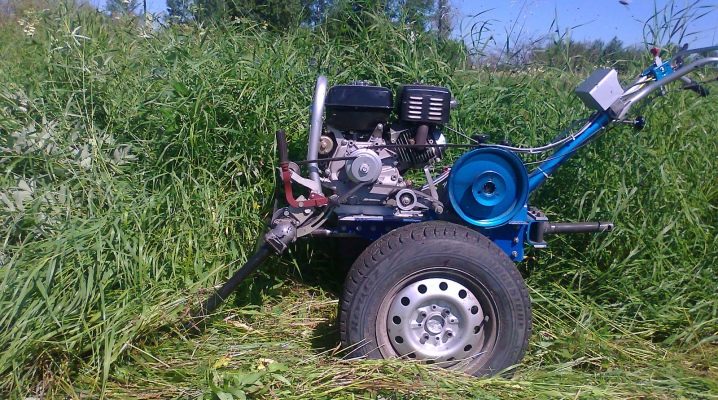
A walk-behind tractor is a technique that is familiar to most farmers. In fact, it is a mobile tractor that is used for plowing soil, planting plants or transporting goods. It is convenient in small suburban areas, where it is already difficult to do everything with your hands, but a large tractor is not needed. If you are reading this article, then you either already have a walk-behind tractor, or you are going to purchase one.
One of the most frequent questions of the owners of this technique is how to make wheels for a walk-behind tractor with your own hands? The thing is that, as standard, they wear out very quickly, and are also not suitable for all types of soils and reliefs. Buying new ones is quite costly, so you can resort to your own skill. This article will look at exactly how to do this.

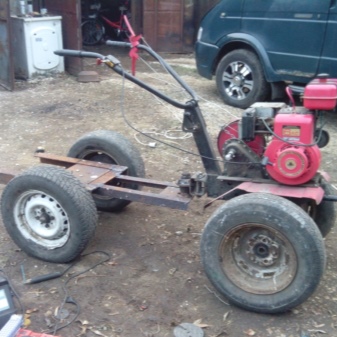
Wheel types
First you need to figure out what types of wheels for a walk-behind tractor generally exist. Since the technique is used in a variety of farming processes, the equipment may vary. This also applies to pneumatic wheels, because a good result and ease of use also depends on the right components. It is important to note that ordinary car wheels from "Oka", "Niva" or "Moskvich" cannot be put on the walk-behind tractor. All of the options below are larger and heavier. It would be more correct to compare them with ATV kits, although they do not always have the right size.
- Pneumatic. This option can be supplied for arable work and for removing roots from the soil. In appearance, these are large wheels, with a diameter of 40 cm and a width of 20 cm. The pattern on the tread must be rough in order for the walk-behind tractor to work well on the soil. Often this option comes standard and is renowned for its durability. However, if they become unusable, then you should immediately look for a replacement.

- Traction. The popular name for these wheels is a herringbone. All because of the pronounced pattern on their rubber. This look is also versatile and suitable for lug or standard transport solutions. For example, they are often used by snow blowers. Traction tires for a walk-behind tractor are also reliable in everyday life.

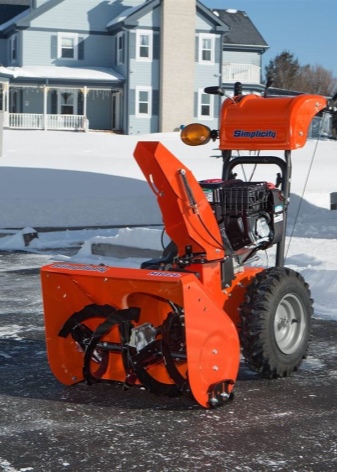
- Solid (most often made of rubber). One-piece configurations are ideal for stony ground. They allow the walk-behind tractor to move faster on such terrain and do not deteriorate after the first use. Of the minuses, they are really very heavy, so it's not so easy to transfer them. Such tires are suitable for MTZ series motoblocks and diesel equipment.
- Metallic. The last variation is suitable for clay soil. The thing is that, unlike the previous wheels, these have steel teeth. This, of course, makes the technique heavier, but in soft ground they do their job perfectly. In another way, metal teeth are also called lugs.
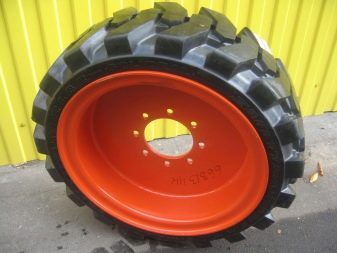
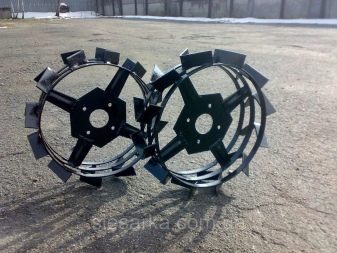
As for general recommendations, when choosing what to wear your walk-behind tractor, pay attention to the front wheel. It is supporting and in the process of use absorbs the entire mechanism. This helps to extend the service life and improve the quality of work.
In general, such a classification of pneumatic wheels is used not only for a walk-behind tractor, but also for trailers or other tools from the same category. So you can safely use it, because to maintain the durability of all equipment, the farmer's assortment should include both a trailer and a walk-behind tractor.
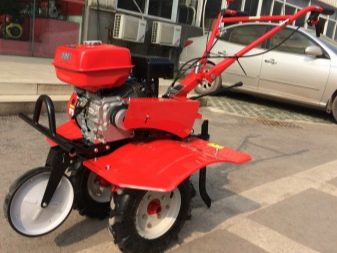
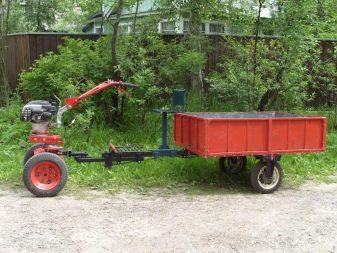
How to make wheels with your own hands
Having dealt with the types of tires, you should learn how to make the same, but homemade.The first thing to consider is that in any case you will not be able to make wheels for a walk-behind tractor from scratch. You will need a base - old pneumatic wheels from a car, for example, from "Oka" or from "Niva". In this matter, it all depends on your choice or the availability of suitable material. And by the way, farmers do not recommend buying a new set of tires for rework, as they are not cheap and as a result you will not be able to save a decent amount by doing the rest of the work yourself.
The second thing, without which nothing will come of it, is to prepare the drawings before starting the process. This issue must be approached responsibly, and the drawings must meet the requirements based on the materials available.
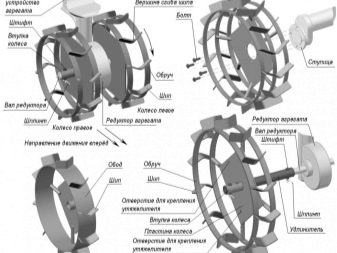
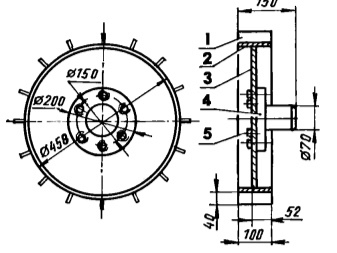
Paired wheels are often made, where an additional weighting agent can be placed inside. Let's start with this option. The tandem version is a quick and efficient wheel conversion that is available to many. You will need 4 wheels with a good base made of stainless steel (by the way, the masters have tires from Moskvich). You also need to have iron plates with you. The process itself is carried out in several steps.
- The rubber tire is removed from the base.
- To the rim on which the tire is put on, it is necessary to weld several iron plates, up to 5 cm wide. Usually, a square is formed from the plates, which is welded to one of the sides of the rim.
- Next, the rim from the second wheel is welded to this square. Thus, you connect the two rims to each other using plates and welding.
- In the last step, the rubber is reinserted onto the rims.
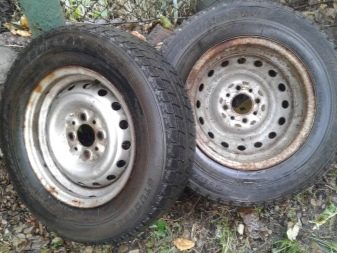

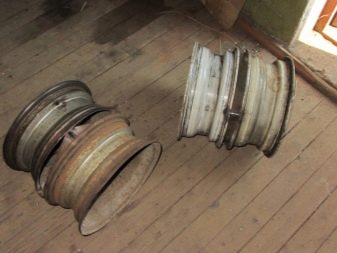

That's it, you've got the kit you need. As you can see, their main advantage is their large width. Thanks to this, they look less like wheels from a car, and more like an option for a walk-behind tractor.
The second option, how to strengthen pneumatic wheels, is to increase their wear resistance due to additional materials. In this way, you can remake the wheels of a transport vehicle such as a motorcycle or ATV. In general, you will need larger tires than a regular passenger car. Large chains can be used to increase rigidity.

Let's move on to the process itself: chains need to be welded to pneumatic wheels. You can try pairing them with rubber or an iron rim. Next, you need to make notches on them so that they imitate the lugs. The result should be similar to purchased metal wheels.
You will have to tinker with this method so that the chains are tightly held and do not fly off during work. This is where blocking chains with a rim comes in handy, which can be done with steel fasteners and hooks.
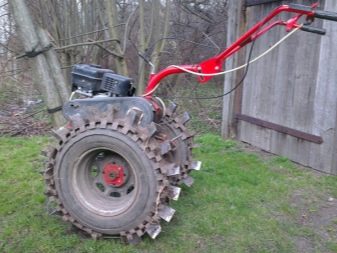
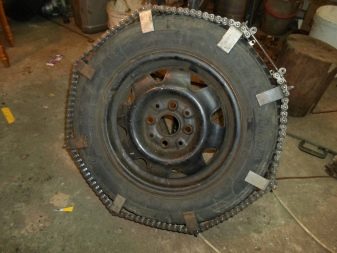
An additional element that is often lacking for the convenience of working with a walk-behind tractor is an unblocker, sometimes called a differential. Since the instrument itself is heavy, it is often difficult to control it, namely, to turn in different directions. In this case, an unblocker comes to the rescue - a special device that is attached to the wheels and increases their maneuverability in difficult areas.
The unlocking tool is installed to the output shafts of your walk-behind tractor using bolts. During operation, it reduces the turning radius of the entire machine and increases the track width. If you use a mini tractor on a regular basis, then this thing is simply irreplaceable. You can make an unblocker yourself based on bearings, but in fact - the game is not worth the trouble. On the market they can be found in a wide variety of variations, and unlockers are inexpensive. The most important thing is to find a specialist who can advise on a good product.
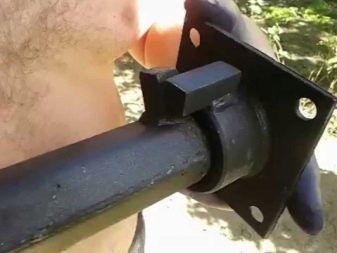
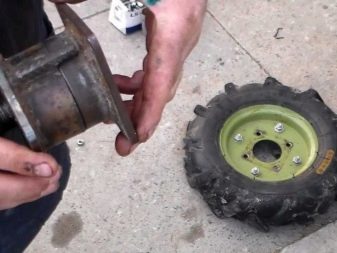
So, if you have a need for new "shoes" for a walk-behind tractor and you have the opportunity to use tires from a regular car or motorcycle, then why not give it a try. This article lists the simplest and most popular options, but it all depends on your experience and skills. In fact, the solution is very simple, you only need welding and a little skill.But for a good result, consult with experienced craftsmen before starting work.
For information on how to make wheels on a walk-behind tractor with your own hands, see the next video.



































































The comment was sent successfully.